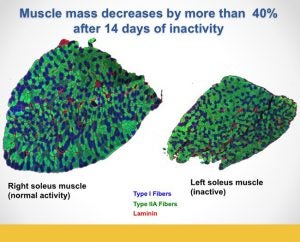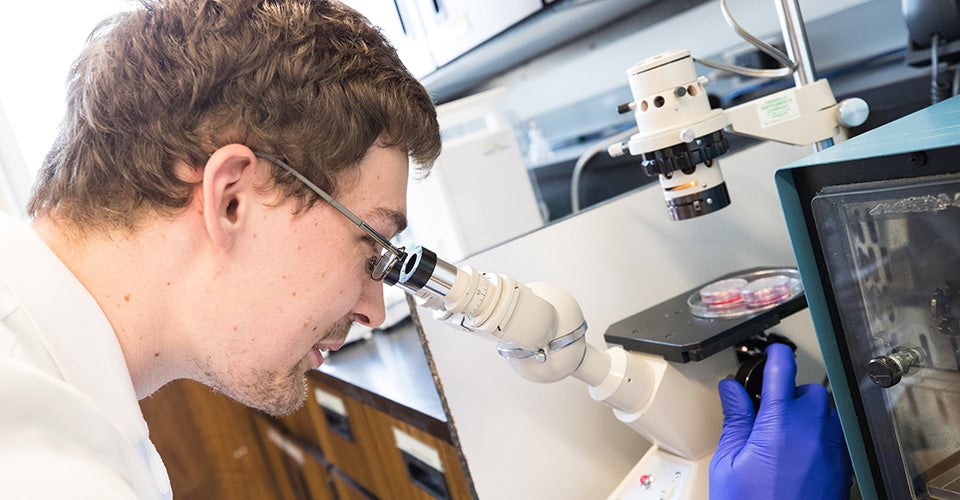PRESERVING STRENGTH
ECU research looks to understand, prevent muscle loss
An East Carolina University researcher has received a five-year, $1.61 million grant from the National Institutes of Health with a goal of identifying new therapies to preserve muscle mass in people with chronic diseases or aging.
Dr. Jeffrey Brault, associate professor of kinesiology, biochemistry and molecular biology, and physiology, is a longtime researcher of skeletal muscle atrophy – the wasting of muscle that happens with inactivity, aging and diseases such as renal failure, heart failure and cancer.
People lying in a hospital bed or at home often are less active and can’t exercise due to weakness from their illness, but there aren’t effective treatments for atrophy. The loss of muscle mass also increases the risk of death and decreases quality of life.

Brault and his team illustrate the effect of inactivity on muscle mass.
“What are the mechanisms and how does it work, and can we target it with drug therapy?” Brault asked.
During preliminary studies, Brault’s lab in the Brody Medical Sciences Building identified the metabolic enzyme AMP deaminase, or AMPD, as the probable regulator of muscle mass and mitochondria content (the energy-producing organelle that’s largely responsible for strength and endurance), Brault said.
A major function of AMPD is to control ATP, the energy currency inside the cell.
“When muscles are wasting, this enzyme is really high,” he said.
Research shows that an increase in AMPD activity leads to a decrease in ATP inside muscle cells, which appears to lead to degradation of muscle proteins and loss of mitochondria, Brault said.

Miller and Brault
“The muscles are smaller and weaker,” he said. “They lose endurance capacity as well.”
Over the next five years, Brault and first-year doctoral student Spencer Miller and second-year graduate student Nicolas Verhoeven will study how muscle energetics – especially ATP levels – control muscle protein degradation and mitochondrial content.
“We’re looking at cultured muscles and the muscle cells,” Brault said. “We are changing the amount of enzyme, and measuring how fast proteins are made or degraded.”
Pharmaceutical companies are looking for therapeutics that address atrophy, which Brault’s lab hopes to develop through its research.
“The long-term goal of this project is to identify new drug targets to increase muscle mass, mitochondrial content and perhaps improve the energetic state and function of atrophic muscle,” said Brault, who holds appointments in the College of Health and Human Performance and the Brody School of Medicine.

Nicolas Verhoeven, a second-year master’s student in exercise physiology, examines muscle cells under a microscope.